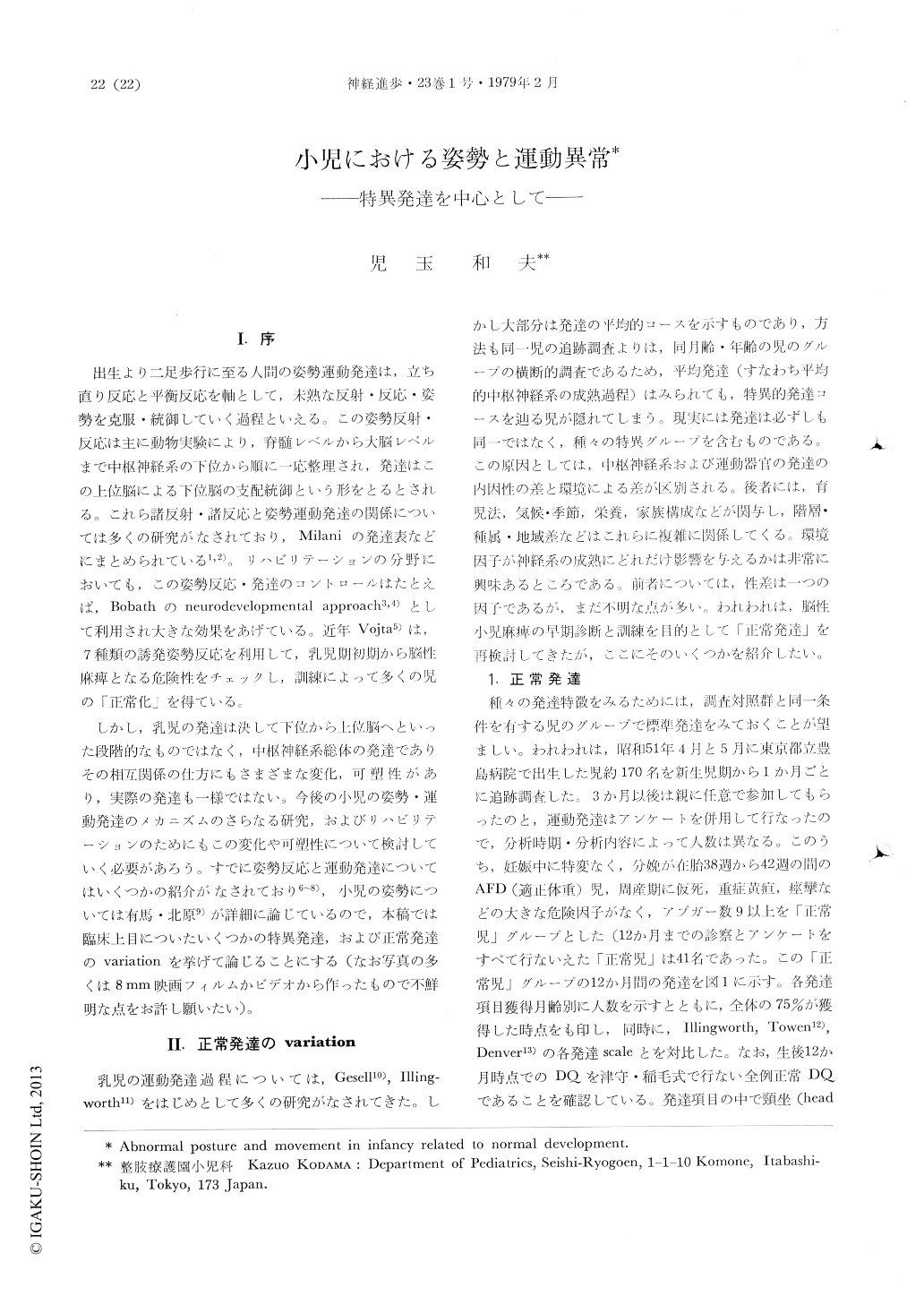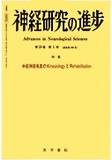Japanese
English
- 有料閲覧
- Abstract 文献概要
- 1ページ目 Look Inside
I.序
出生より二足歩行に至る人間の姿勢運動発達は,立ち直り反応と平衡反応を軸として,未熟な反射・反応・姿勢を克服・統御していく過程といえる。この姿勢反射・反応は主に動物実験により,脊髄レベルから大脳レベルまで中枢神経系の下位から順に一応整理され,発達はこの上位脳による下位脳の支配統御という形をとるとされる。これら諸反射・諸反応と姿勢運動発達の関係については多くの研究がなされており,Milaniの発達表などにまとめられている1,2)。リハビリテーションの分野においても,この姿勢反応・発達のコントロールはたとえば,Bobathのneurodevelopmental approach3,4)として利用され大きな効果をあげている。近年Vojta5)は,7種類の誘発姿勢反応を利用して,乳児期初期から脳性麻痺となる危険性をチェックし,訓練によって多くの児の「正常化」を得ている。
しかし,乳児の発達は決して下位から上位脳へといった段階的なものではなく,中枢神経系総体の発達でありその相互関係の仕方にもさまざまな変化,可塑性があり,実際の発達も一様ではない。
Abstract
In the development of infants, there are many variations and deviations compared to so called 'normal development'. Some of these infants develop to abnormal states such as cerebral palsy, myopathy or mental retardation, however many of them develop to 'normal' finally. For early diagnosis and early treatment of abnormal infants, we should know well these variations. In this article I pointed out some of these developments.
1) normal development ; To gain our own normal developmental chart, we examined 'normal infants' (N=41) every month from their new born age till twelve months old.

Copyright © 1979, Igaku-Shoin Ltd. All rights reserved.


